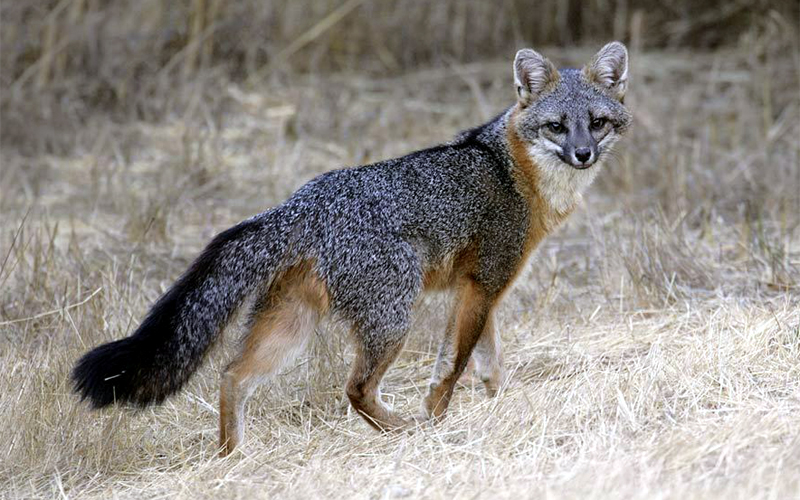The
gray fox, as we saw at the Adirondack Wildlife Refuge, is an adorable animal of
the Park that is much less well known than the red fox. In areas of poor light,
or when seen from the side, a gray fox can easily be mistaken for a red fox.
The best way to distinguish a gray fox from the red fox is by the nearly black
band along the upper part of the tail and the slender black patch on the snout
of the gray fox. The gray fox also differs from the red fox by its claws that
can dig into the bark of a tree along with jointed front paws that allow the
canine to grasp the trunk of a tree and climb off the ground. While the gray
fox cannot climb as skillfully as a raccoon, it can get high enough off of the
forest floor to avoid being attacked by a coyote.
The
gray fox thrives in the deciduous woodlands of the Adirondacks. The ability of
the fox to climb trees allows it to eat apples that have not yet fallen and
clusters of acorns on low-hanging branches of oaks. The gray fox is much more
likely to be found near hardwoods in the forests of the Adirondacks due to
their nutritious mast. The forest also provides cover for this small predator,
allowing it to move about an area without being easily spotted. The forest also
provides a means of escape; if a coyote approaches a gray fox, it can easily
dart up a tree and avoid attack. While the populations of red foxes tend to be
lower in areas inhabited by coyotes, gray fox populations remain unchanged in
regions in which the coyote has taken up residence.
Recent
changes in the Park have made the environment more suitable to the gray fox.
Over the past century, the rise in the coyote population is believed to have negatively
influenced red fox numbers throughout the Adirondacks, while the gray fox population
has increased. This could also be related to the change in climate to warmer
temperatures, which seems to favor the gray fox. The increase in gray fox
populations can also be attributed to the maturing of the successive forests,
which provide more hardwoods and areas of cover for the gray fox. The gray fox
is certainly no longer a rarity in the Park, and visitors of the Adirondacks
are increasingly likely to catch a glimpse of the little predator at dusk or
dawn.
Sources:
info: http://www.adirondackalmanack.com/2013/08/adirondack-wildlife-the-gray-fox.html#sthash.BM1uNHJv.dpuf
picture: http://scvnews.com/wp-content/uploads/2014/01/grayfox2.jpg

Great article Emma! It will be interesting to see how populations change over time with the increasing coyote population. I wonder if gray fox populations will become evolutionary advantaged because of their ability to climb trees, which would make them more effective and prominent in the Adirondacks! And with these increasing populations, I'm interested to see their effect on the ecosystem as a whole. Will they exclude other predators through competition?
ReplyDelete